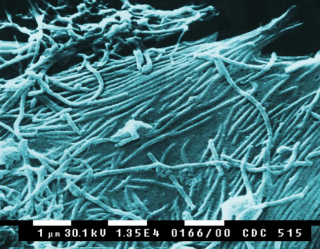|
By Alexander Bernstein
If there is one disease that you don’t want to get, it is Ebola. Know in the scientific community as Ebola Hemorrhagic Fever (also Ebola virus disease), this viral infection derives its namesake from the Ebola River in the Democratic Republic of the Congo where it was first documented in 1976. The virus itself is a member of the RNA virus family known as the Filoviridae. While there are five documented subtypes of the virus, only four have been found to infect humans: Ebola-Zaire, Ebola-Sudan, Ebola-Ivory Coast, and Ebola-Bundibugyo. A nightmare for epidemiologists and medical professionals, the virus has among the highest case fatality rates of any human disease, with infected individually typically dying of massive internal bleeding and hemorrhaging. Certain outbreaks of the virus such as those in 1976 and 2003 have seen the mortality rates reach up to 90%. Further problems arise from the difficulty to diagnose the disease, as early stages of the infection present very generic symptoms such as weakness, sore throat, and the presence of a rash. Since the kill rate is so high, no carrier state exists, and contamination from human to human is thought to only be spread by means of bodily fluid contact, the 1977 International Colloquium on Ebola Virus Infection deemed the disease to have a relatively low potential of widespread epidemic. Regrettably, that may no longer be the case. As of October 26th, 2012, 52 cases of Ebola, of which 35 are laboratory confirmed, have appeared in The Democratic Republic of the Congo, as reported by the World Health Organization (WHO). NPR reports that the death toll is at 31, with WHO spokesman Tarik Jasarevic noting that this number will likely rise in the near future as he states, “We can expect an increase in the number of cases as more people are tracked.” The official continues as he tells reporters, “I want to stress that this is a serious outbreak, and there is a risk of the Ebola virus spending.” A different official from the very same body, while stationed in the nation’s capital city of Kinshasa, confides that the outbreak may very well be “out of control” as he warns “if nothing is done now, the disease will reach other places and even major towns will be threatened.” Although the Centers for Disease Control and Prevention explains that no known cure or vaccine for the disease is in existence, the current strain in effect has been identified as Ebola-Bundibugyo, which had a 34% mortality rate in an earlier outbreak. Much caution must be taken with the current outbreak however, as multiple cases have been confirmed dangerously close to the city of Isiro, which boasts a population of over 150,000. As such, the consequences of the virus breaking out into a full-fledged epidemic in this region would be catastrophic as far more unfortunate victims would meet their end. Indeed, if the virus enters the city’s hospital system, as is typically the greatest danger in an Ebola outbreak, then many more than the 200 unfortunate individuals who perished in the 1976 epidemic -the worst confirmed Ebola epidemic to date – would lose their lives.
0 Comments
Leave a Reply. |
Categories
All
Archives
April 2024
|

